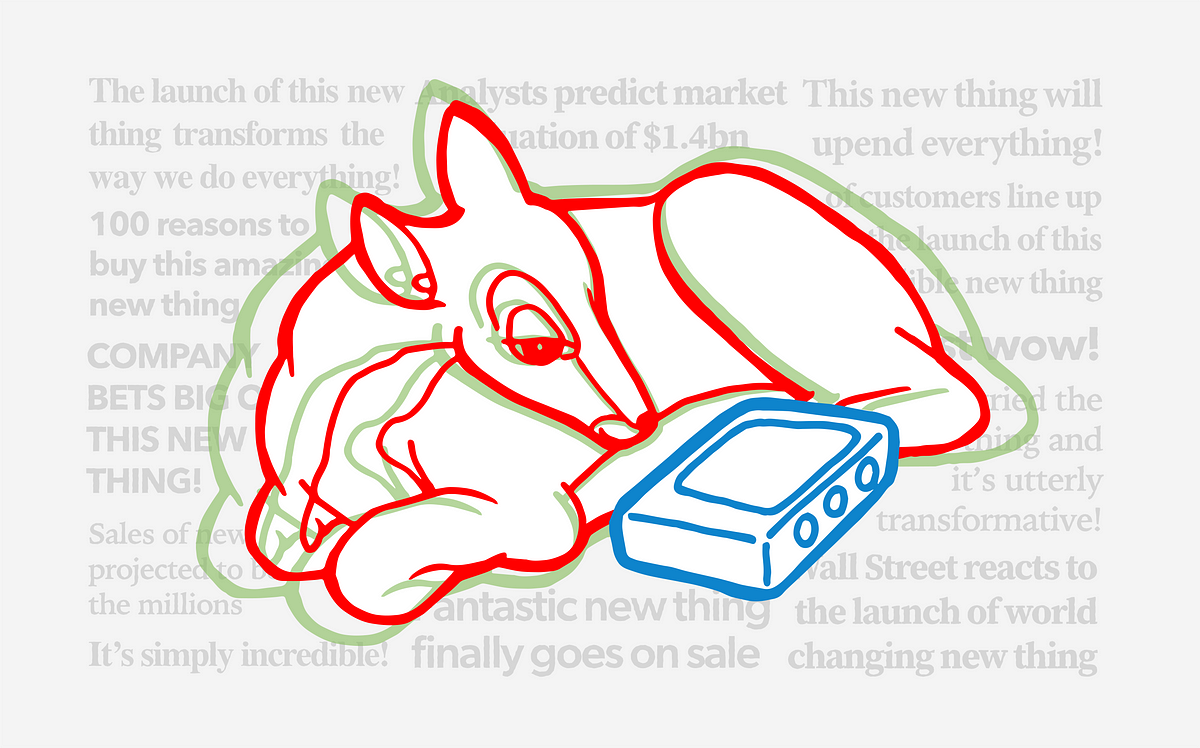
Highlights §
- Despite the well documented progression of technology in the last decade, our personal product portfolios haven’t really changed a great deal. There’s been plenty of evolution and new features, but nothing really ‘new’ has emerged in quite a while. For the general consumer, technology appears to have largely settled into a five device ecosystem, consisting of phone, laptop, desktop, tablet and watch. There’s perhaps an argument for smart speakers here, but voice UI hasn’t become the dominant interaction mode for anything much beyond selecting playlists and setting pasta timers. These devices may have sold in significant numbers but they haven’t fundamentally changed much of consequence. The TV has also played a major role in our collective tech experience of late, but the devices themselves have remained remarkably stable for years (barring occasional misadventures into curved, rolling and 3D displays), with most of the change coming via the pipes which feed the content. Broader still, perhaps games consoles could be a contender (and it’s true that they represent a much larger industry than most of us think), but the devices themselves haven’t formally shifted from a box plugged into a TV since the Atari days. There’s also been a slew of ‘connected things’ (doorbells, cameras, smoke alarms, etcetera) which have all played their part, but still feel like appendages to the Big Five. (View Highlight)
- When we take an objective look at these devices, they all feel remarkably mature. Whilst the iMac and other ‘one box’ solutions adjusted our expectations of desktop computing, the essential premise has remained largely the same for decades: a large screen for productive work, paired with a powerful processor and a keyboard and mouse for input. The laptop emerged around the mid-eighties and its design has remained reasonably ossified for well over two decades. The iPhone debuted in 2007 (an eyebrow-raising 17 years ago) and tablets arrived shortly afterwards in 2010. ‘Smart watches’ have been around for over fifteen years in various forms, before Apple began rapidly swallowing the market from 2015. Since their introduction, these five devices have shifted in their shoes and added countless new features, but it’s mostly been a tale of iteration and evolution. The fundamental experiential changes we’ve felt over the last decade have largely come via huge amounts of back end work, content acquisitions, hardware refinement, partnerships and software integrations which escape the everyday interest of the average consumer. Ultimately, the world of personal computing devices has become mature, anchored and stable, but there are signs that things might be set for a change. (View Highlight)
New highlights added February 19, 2024 at 6:32 PM §
- Over the past year or so, we’ve seen some of these things start to break cover. There was the launch of Humane’s AI Pin , the Rabbit R1 mobile device, and most recently Apple’s Vision Pro headset, each of which represents an exploratory move towards a new way of doing things with a new type of device. Following the launch of these three things, the public response has been mixed at best. Whilst tech companies still have their fans, their plaudits and excitement have been largely drowned out by mockery and lampooning. (View Highlight)
- Trust and confidence in technology companies is clearly at a low ebb, yet in the face of this shift the tech industry has largely maintained its culture of overpromising, exaggeration and hyperbole from a decade ago. The ways in which these companies launch new products — and the ways in which the media talks about them — is often so over-the-top, gushy and breathless that it’s easy (and fun) to point and laugh. Further down the financial stack, the competitive venture capital scene has resulted in a similar culture of plucky startups over inflating the impact and maturity of their ideas and mimicking the behavior of the companies they admire so much. (View Highlight)
- new product presentations have become little more than pantomimes, with the same overpromising, over enthusiastic, magniloquent lines wheeled out over and over again. Far from exciting the public, this now appears to represent an ongoing provocation, resulting in a collective, reflexive response. (View Highlight)
- In parallel, I’d like to see ‘new things’ launched with significantly more openness and honesty to their flaws. We need to get beyond the notion that uncertainty is a weakness. Let’s find a way to present new ideas as a representation of the best we can do right now, and that we’re open to change. Any ‘new thing’ won’t have got it right the first time, and there should always room for pivots, evolutions and changes of direction. (View Highlight)
